This is the first post for the wild heart hive. It is the open-mated offspring of the premiere hive.
July 24
I was surprised to see some goldenrod starting to flower here.
The bees appeared to have drawn the majority of two boxes of new comb and still had two boxes of capped honey from the spring. A solid brood nest seemed to have been established in the new boxes and the population looked strong.
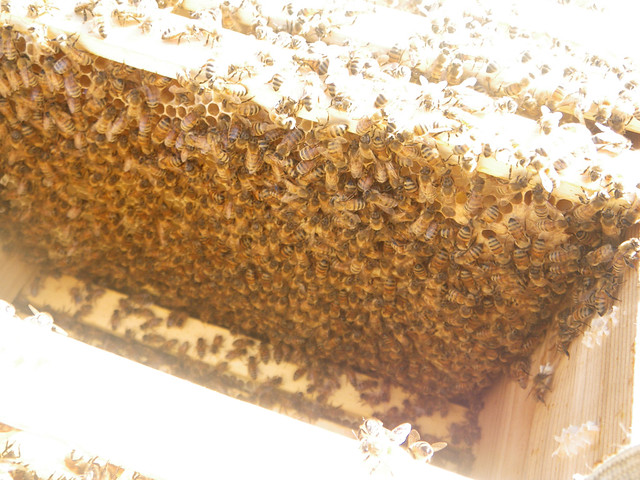 Photo by: Shawn Caza / CC: Attribution-NonCommercial-ShareAlike License
Photo by: Shawn Caza / CC: Attribution-NonCommercial-ShareAlike License
At this point, I felt they had everything lined up to be strong for winter so I decided to do the first harvest. I removed the top box and tried out a hastily made bee escape that I had tried to make from a ventilation cover I had used when transporting the bees.
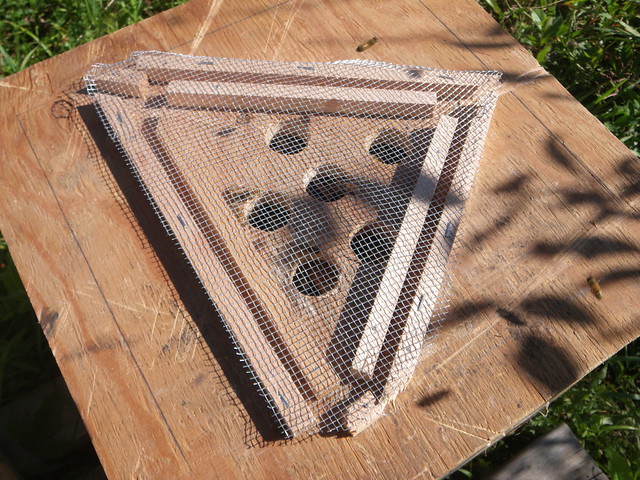 Photo by: Shawn Caza / CC: Attribution-NonCommercial-ShareAlike License
Photo by: Shawn Caza / CC: Attribution-NonCommercial-ShareAlike License
The multiple exit holes of the ventilation cover did not prove to be a positive feature for a bee escape. Some bees escaped but many bees crawled out one hole and back down another. I gave it a little while before resorting to a combination of smoke, waiting till dusk, and manually scooping out as many bees as I could. In the end the vast majority of the bees left. I will certainly try to make a better bee escape for next time.
I left them with a new box under-supered and seeded with two combs.
A final look at the combs from the bottom of the harvested box. You can see they actually made capped honey cells directly on top of other capped honey cells in the upper left hand corner.
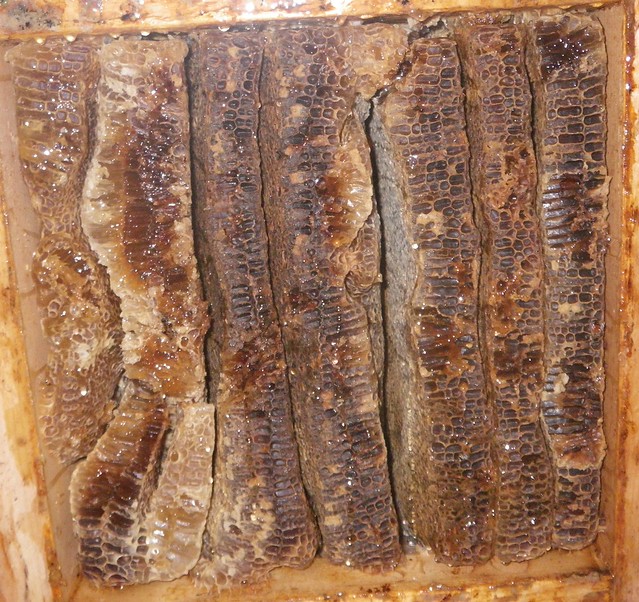 Photo by: Shawn Caza / CC: Attribution-NonCommercial-ShareAlike License
Photo by: Shawn Caza / CC: Attribution-NonCommercial-ShareAlike License
For what it's worth I did measure some former brood comb after uncapping it.
 Photo by: Shawn Caza / CC: Attribution-NonCommercial-ShareAlike License
Photo by: Shawn Caza / CC: Attribution-NonCommercial-ShareAlike License
This would have been some of the first comb made by the premiere hive swarm last spring. Ten cells average out to about 5.3 mm, but some of those cells certainly look to be around 5 mm.
I crushed and strained the honey. It took about 2.5 days of waiting to get the majority of the honey out of the comb and strained. I found it interesting to discover the moisture content of a sample taken from the top of the strained honey was right above 17.8%
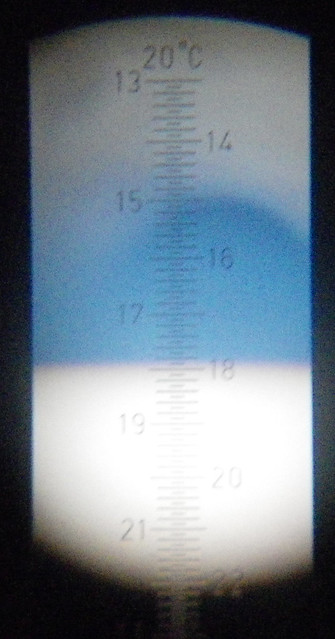 Photo by: Shawn Caza / CC: Attribution-NonCommercial-ShareAlike License
Photo by: Shawn Caza / CC: Attribution-NonCommercial-ShareAlike License
But the sample from the bottom was a little lower at 17.6%
 Photo by: Shawn Caza / CC: Attribution-NonCommercial-ShareAlike License
Photo by: Shawn Caza / CC: Attribution-NonCommercial-ShareAlike License
The more concentrated honey sinks to the bottom of a container. The readings were on the whole just under the acceptable limit for Ontario No. 1 honey. A damp spring probably contributed to higher than expected moisture levels for honey that came from 100% capped comb.
The result was a little over 30 lb of a rather magical flavoured honey.
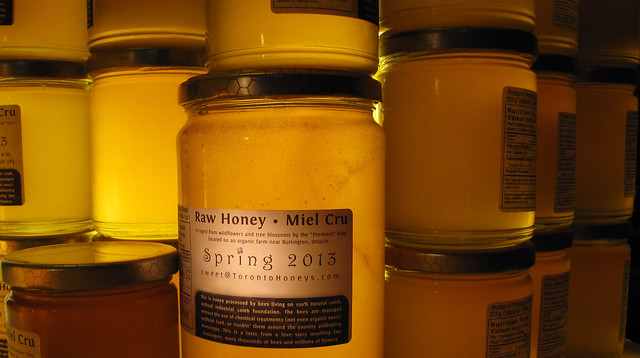 Photo by: Shawn Caza / CC: Attribution-NonCommercial-ShareAlike License
Photo by: Shawn Caza / CC: Attribution-NonCommercial-ShareAlike License
August 11
Bees were pollinating the melon patch at the farm.
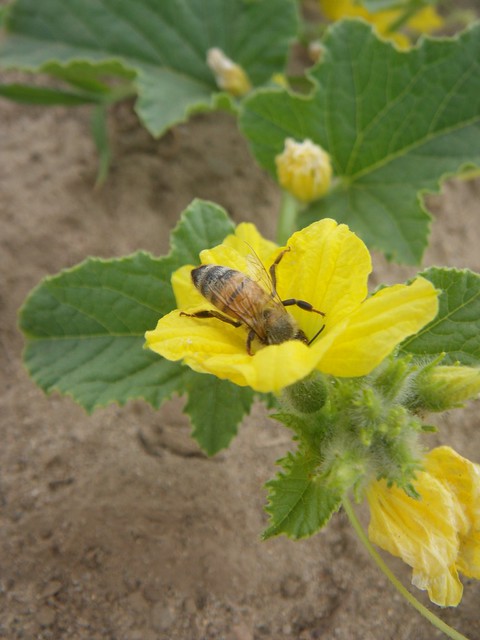 Photo by: Shawn Caza / CC: Attribution-NonCommercial-ShareAlike License
Photo by: Shawn Caza / CC: Attribution-NonCommercial-ShareAlike License
and a fair bit of goldenrod in bloom around the hive.
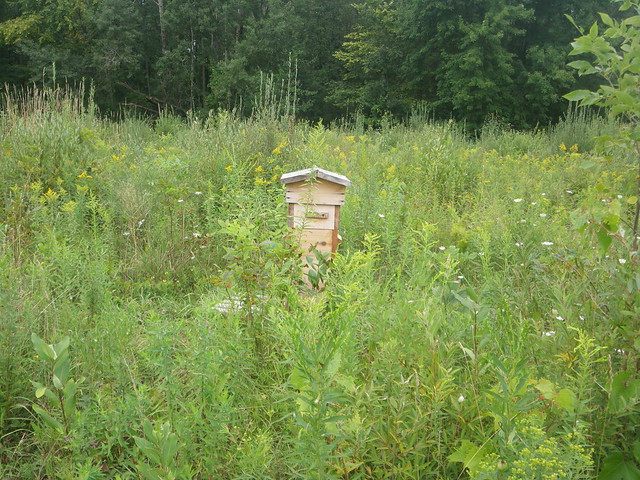 Photo by: Shawn Caza / CC: Attribution-NonCommercial-ShareAlike License
Photo by: Shawn Caza / CC: Attribution-NonCommercial-ShareAlike License
This variety of goldenrod is blooming a little earlier than I'm used to seeing.
 Photo by: Shawn Caza / CC: Attribution-NonCommercial-ShareAlike License
Photo by: Shawn Caza / CC: Attribution-NonCommercial-ShareAlike License
It has a vibrant red / purple stem:
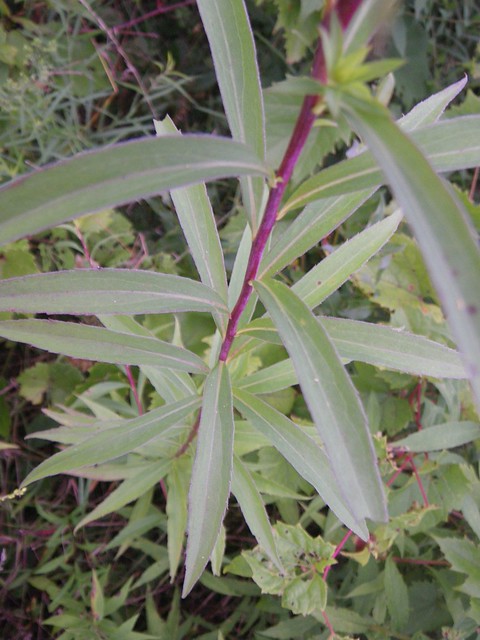 Photo by: Shawn Caza / CC: Attribution-NonCommercial-ShareAlike License
Photo by: Shawn Caza / CC: Attribution-NonCommercial-ShareAlike License
They had built a good amount of comb on all bars of the new box.
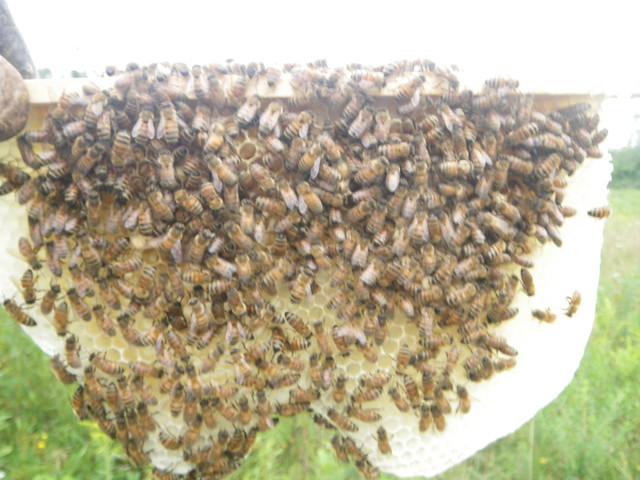 Photo by: Shawn Caza / CC: Attribution-NonCommercial-ShareAlike License
Photo by: Shawn Caza / CC: Attribution-NonCommercial-ShareAlike License
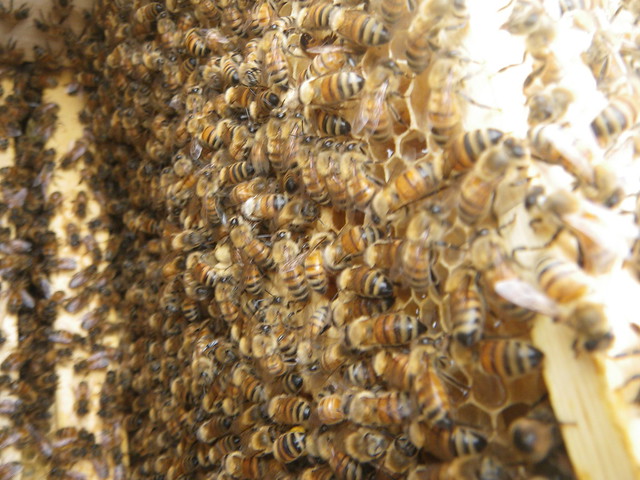 Photo by: Shawn Caza / CC: Attribution-NonCommercial-ShareAlike License
Photo by: Shawn Caza / CC: Attribution-NonCommercial-ShareAlike License
They were using it for brood, some capped and loads of eggs on the outer comb:
 Photo by: Shawn Caza / CC: Attribution-NonCommercial-ShareAlike License
Photo by: Shawn Caza / CC: Attribution-NonCommercial-ShareAlike License
The new queen seems to be vigorous and isn't having a problem laying all kinds of eggs.
The box below that was loaded with bees:
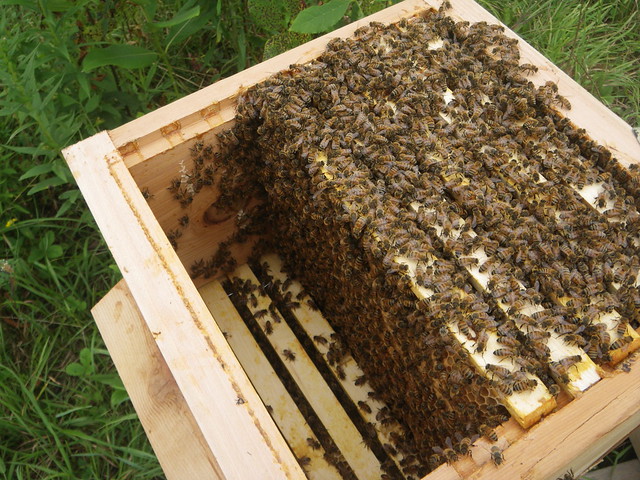 Photo by: Shawn Caza / CC: Attribution-NonCommercial-ShareAlike License
Photo by: Shawn Caza / CC: Attribution-NonCommercial-ShareAlike License
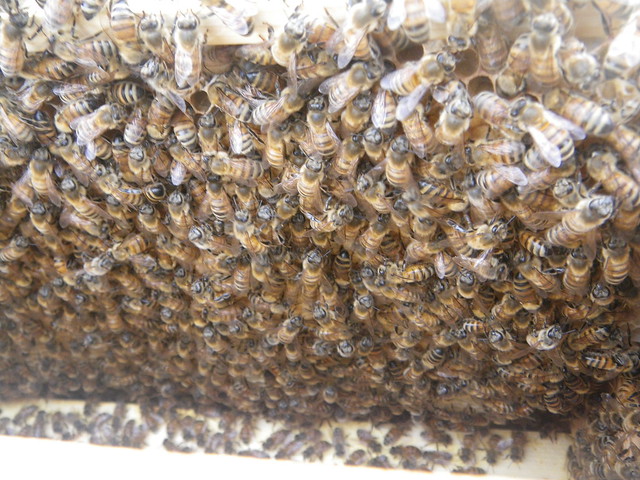 Photo by: Shawn Caza / CC: Attribution-NonCommercial-ShareAlike License
Photo by: Shawn Caza / CC: Attribution-NonCommercial-ShareAlike License
And lots of brood:
 Photo by: Shawn Caza / CC: Attribution-NonCommercial-ShareAlike License
Photo by: Shawn Caza / CC: Attribution-NonCommercial-ShareAlike License
The bottom box was not filled out with comb as completely as I had remembered thinking it was on the last check. All the bars had comb, but it appears that they had stopped building it, or using it for much. No sign of brood and little in the way of stores. Instead the bees prioritized building the new box above. This is a look as some of the combs I had placed aside in an empty box to make room while doing the inspection:
 Photo by: Shawn Caza / CC: Attribution-NonCommercial-ShareAlike License
Photo by: Shawn Caza / CC: Attribution-NonCommercial-ShareAlike License
I'm still impressed with how much comb they have built. All of my weaker colonies have more or less put the breaks on comb production. It does seem to suggest that the summer slow period was not the best time to super and I will remain curious of what would have happened if I had nadired the new box on the previous visit.
